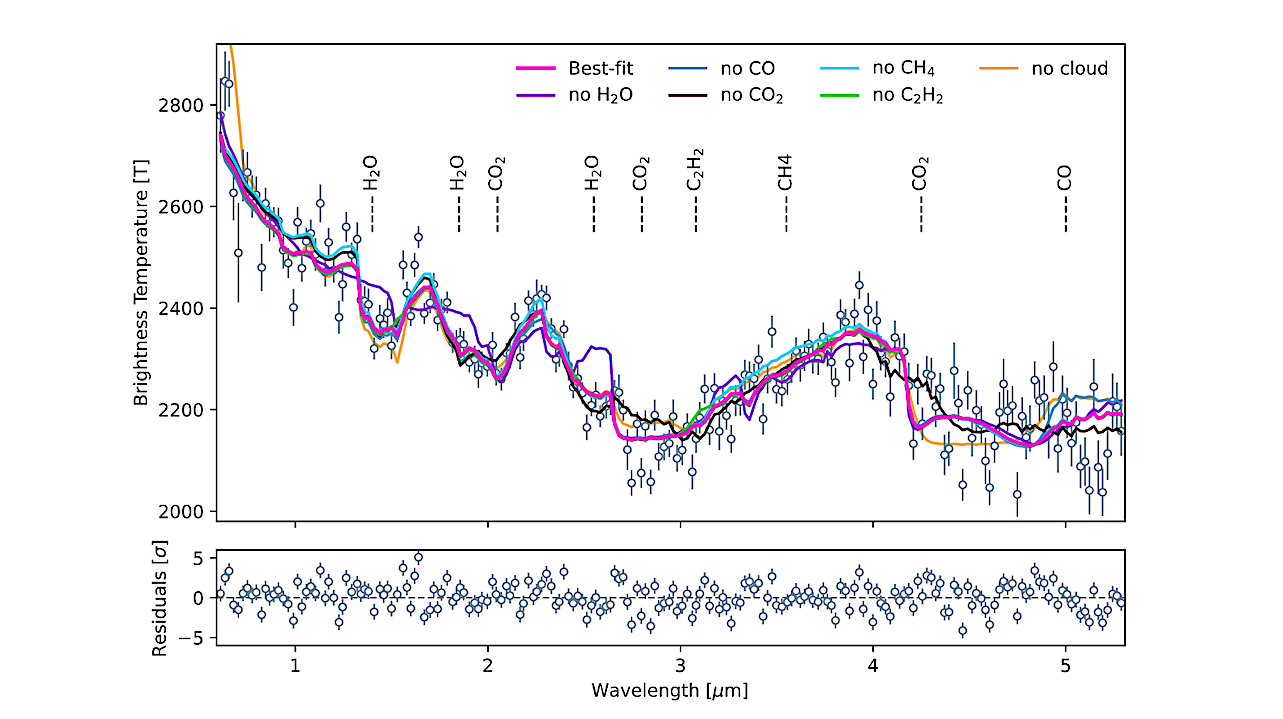The emission spectrum of WASP-19b in terms of brightness temperatures (grey), derived from the observed emission spectrum shown in Figure 1 (from Eureka! reduction). The best-fit free-chemistry model from our retrieval analysis is shown, along with its residuals, as well as the best-fit retrieved models excluding each detected species. These models were used to statistically assess the significance of each detection. Key spectral features from each detected molecular species are highlighted for reference. — astro-ph.EP
Ultra-hot Jupiters (UHJs) offer exceptional opportunities for detailed atmospheric characterization via emission spectroscopy.
Here we present a comprehensive analysis of the dayside atmosphere of WASP-19b—one of the shortest-period UHJs—using archival JWST NIRSpec/PRISM observations spanning 0.6-5.3 μm. We report robust detections of H2O (16.44 σ), CO (5.47 σ), and CO2 (10.72 σ), along with marginal detections of CH4 (3.76 σ) and C2H2 (2.45 σ).
The retrieved composition reveals a highly carbon-rich atmosphere with a tightly constrained super-solar C/O ratio of 0.94±0.03. Elevated abundances of carbon-bearing species provide strong evidence (11.69 σ) for disequilibrium chemistry.
We also detect condensate clouds, likely Al2O3(c), at high significance (17.28 σ), and constrain the atmospheric metallicity to 1.7+1.2−0.7 × solar. These results establish a precise benchmark for modeling dayside conditions in extreme irradiated atmospheres and demonstrate JWST’s transformative capabilities for exoplanet science.
Suman Saha, James S. Jenkins
Comments: 32 pages, including 11 figures and 3 tables. Under review—comments are warmly welcomed!
Subjects: Earth and Planetary Astrophysics (astro-ph.EP)
Cite as: arXiv:2507.02797 [astro-ph.EP] (or arXiv:2507.02797v1 [astro-ph.EP] for this version)
https://doi.org/10.48550/arXiv.2507.02797
Focus to learn more
Submission history
From: Suman Saha
[v1] Thu, 3 Jul 2025 16:58:55 UTC (17,043 KB)
https://arxiv.org/abs/2507.02797
Astrobiology

